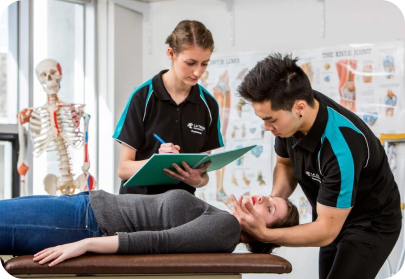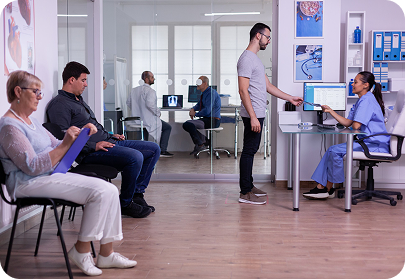If you are a physio, you are not just repairing bodies. You are helping people take their lives back. But how do you know if your treatment is effective? Enter outcome measures, which are how you objectively measure progress and results. These tools do not only present you with numbers. These are stories; stories of your patients.
When physiotherapy practices consistently use outcome measures enough, they can move from “I think this is working” to “Here is the evidence it working”. As healthcare continues to be driven by data, physio outcome measures are no longer a nice-to-have; they are a must-have.
In this not-so-quick blog, we explore how outcome measures are used, why they are important, and how we can make it easier with tools like Enquiry Medical. Let’s get into it.
What is an Outcome Measure?
An outcome measure is a standardized instrument used to characterize a patient at one point in time and to capture change over time. In physiotherapy, these measures can assess different domains of pain intensity, activity and participation, and function, such as mobility, strength, or function. Outcome measures enable physiotherapists to assess objectively the effectiveness of their interventions and tailor treatment accordingly.
Types of Outcome Measures Used by Physiotherapists
They are like a scoreboard for how your body is healing. However, depending on the target of the treatment and the desired outcome, therapists will select the option that they feel best fits the patient.
Here are commonly used outcome measures in physiotherapy:
-
Functional Outcome Measure
They monitor the way a patient walks and performs basic tasks. Can they walk across a room? Climb stairs? Get out of bed? These tests give answers
Common tools:
- Timed Up and Go (TUG)
- 6 Minute Walk Test (6MWT)
- Berg Balance Scale
- Functional Independence Measure (FIM)
- Disability Rating Index (DRI)
-
Range of Motion Measures (ROM)
It measures the degree to which a joint is capable of bending and stretching. Is the knee stuck? Can the shoulder rotate? This indicates stiffness or improvement in these tests.
Example Tools :
- Joint angle assessors
- Frequent movements: Flexing the knee, lifting the shoulder away from the body.
They are easy but immensely powerful tools, good outcome measures used day to day by physiotherapy teams.
-
Strength Measures
Is the patient improving physically? Well, these tests bring you the truth about it, whether it's grip power or leg strength.
Used tools:
- Manual Muscle Testing (MMT)
- Grip strength dynamometers
- Maximum voluntary isometric contraction (MVIC)
Tracking strength is essential in rehab and recovery.
-
Pain Assessment Tools
This is an intricate matter because no two people experience pain in the same manner. This is why we should be able to measure well.
- Pain scale examples
- Visual Analog Scale (VAS)
- Numeric Rating Scale (NRS)
- McGill Pain Questionnaire
These therapy outcome measures convert pain into numbers to help you track and treat it.
-
Quality of Life Measures
These consider the impact of a certain condition/injury on the individual's entire life, not solely their body.
Popular tools:
- SF-36 (Short Form Health Survey)
- EQ-5D (EuroQol-5 Dimension)
- World Health Organization Quality of Life (WHOQOL)
Because sometimes it is not about the numbers, it is about feeling better than lifting heavier.
-
Patient Reported Outcome Measures (PROMs)
Let the patient tell their own story. Read PROMs in their own words , how it feels, how it moves, how it lives.
Examples:
- Oswestry Disability Index (ODI)
- Knee Injury and Osteoarthritis Outcome Score (KOOS)
- Neck Disability Index (NDI)
They assist you in treating the individual, not just the symptoms
-
Balance and Postural Control Measures
Are you concerned about falls or balance problems? These tools assist in identifying the risk well in advance.
Examples:
- Berg Balance Scale
- Romberg Test
- Sensory Organization Test (SOT)
Suitable for older people or people with neurological problems
-
Psychosocial Measures
The mind matters too. Recovery can take longer due to anxiety, depression, and fear. This is where these tools come in to give you an early warning.
Popular measures:
- Hospital Anxiety and Depression Scale (HADS)
- Beck Depression Inventory (BDI)
- Tampa Scale for Kinesiophobia (TSK)
These are impressive adjuncts to the occupational therapy outcome measure.
Benefits of Using Outcome Measures in Physiotherapy
-
Objective Assessment of Progress
Outcome measures are data that objectively demonstrate a patient's progress or regression. As an example, assessments such as the Timed Up and Go (TUG) test or the 6-Minute Walk Test (6MWT) can measure mobility and endurance, providing solid benchmarks for improvement.
-
Enhanced Treatment Planning
Initial assessments help in establishing a baseline, using which realistic goals can be set and interventions can be designed to address specific deficits. Using outcome measures on an ongoing basis helps to keep treatment focused on the patient and on achieving the patient's goals.
-
Evidence-Based Practice
Using outcome measures physiotherapy brings evidence-based practice.. This enables therapists to evaluate and compare the effectiveness of different interventions and implement the best strategies for patient care.
-
Improved Communication
Outcome measures enable more effective communication between healthcare professionals. Standardized data provide everyone from the physician to the occupational therapist a consistent view of where the patient is in their recovery process.
-
Patient Engagement
Patients maintain focus and interest in their therapy when they can see solid proof of their progress. Outcome Measures depict visual proof of progress, a great reminder of why we still do the hard work.
-
Justification for Services
In several health care systems, provision of therapy must be supported by evidence of effectiveness to be reimbursed. Outcome measures provide the documentation necessary to demonstrate the continued need for treatment.
Outcome Measures in Occupational Therapy
Outcome measures specific to occupational therapy are reflective of a patient's performance in day-to-day tasks and inclusion of valuable activities. For example, occupational therapists use standardised tools such as the Canadian Occupational Performance Measure (COPM) and the Assessment of Motor and Process Skills (AMPS), which assist in assessing and planning interventions that improve a patient's more about quality of life.
Integrating Technology: Enquiry Medical
Now, modern-day practice management software such as Enquiry Medical makes fine-tuning the use of outcome measures in practice relatively simple.
This platform provides therapists with:
- Quickly document and monitor patient evaluations.
- Create reports that illustrate the evolution over time.
- Recommend complying with the documentation rules.
- Increase communication with the rest of the clinical community through shared data.
- Integrating with such technology enables physiotherapists to dedicate less time to administrative work and dedicate more time to patient care.
Conclusion
In physiotherapy, outcome measures are an essential component of patient management from assessment to planning and treatment to evaluation. Above all, they improve treatment quality, empower patients, and are a valuable part of the overall health system. The adoption of these tools, particularly with the assistance of platforms such as Enquiry Medical, guarantees the continuity of physiotherapy practices that are effective, efficient, and patient-centered.

 No hidden fees | Scale your practice with clear pricing and packages →
No hidden fees | Scale your practice with clear pricing and packages →






